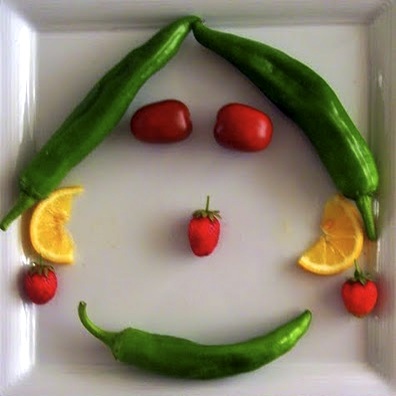 Philosophers have often looked for the defining feature of humans — language, rationality, culture and so on. I’d stick with this: Man is the only animal that likes Tabasco sauce.
Philosophers have often looked for the defining feature of humans — language, rationality, culture and so on. I’d stick with this: Man is the only animal that likes Tabasco sauce.
########
In Texas, when my parents were still married, we ate fried chicken, mashed potatoes laden with cream gravy, green beans flavored with bits of bacon and buttery light biscuits. Every item on the menu had its own serving dish, and cloth napkins were always used.
“May I have another biscuit, ma’am?” I would say.
“You surely may, Sandra Mae,” my daddy’s mama would reply and everyone would smile. Or we’d have fried pork chops and suck on the salty bones, but only when it was just my mama and me at the dinner table.
In Texas, there were black-eyed peas and ham and all manner of greens and put-up preserves. There was watermelon and homemade ice cream from the hand-crank ice-cream maker. Daddy held a bourbon and water in one hand, and turned the handle with the other, while Mama and my daddy’s mama drank iced tea on the back porch and exchanged polite insults. My grandma didn’t like it that Daddy had married a Mexican.
“Don’t forget your manners out there, Sandra Mae,” grandma said, after the divorce, and right before me and Mama set off for New Mexico. She glared at my mama and then bent down to whisper in my ear. “Remember what you learned here and act like a lady.”
In Santa Fe, we ate pinto beans muddy in their own gravy at my mama’s parent’s house. My aunts, cousins, grandparents and sometimes neighbors ladled the beans into their bowls from the pot in the middle of the table. Instead of forks and spoons to get those beans into our mouths, tortillas wrapped in a dishcloth were passed around the table.
Each diner split their tortilla, usually into fourths, but the more adept could function well on thirds or even halves. The tortilla was rolled into a half-moon scoop and the eating commenced. It required dexterity and speed to fill the tortilla scoop and stuff it into your mouth before the bean juice had a chance to run out the back and down your forearm. I leaned over my bowl like the adults and soon shoveled like an expert.
“Hand me another tortilla,” my Aunt Frances would say, not at all unfriendly, pointing her chin in the general direction of the tortillas. The only green vegetable offered at my grandparent’s table were chiles. Meat, usually pork, was a rarity and was reserved for the green chile pods. If I wanted meat or vegetables, I was going to have to learn to eat chile.
Mama started me off slow, picking up the chunks of meat and sucking the chile juice out. She’d place the morsel on my tongue like a sacrament, and sit back and wait. I chewed tentatively, fearing the bite of the treacherous chile pod. Occasionally, a seed would sneak through making my eyes tear and my nose run. I’d swallow glass after glass of my grandparent’s icy well water, my face contorted in pain.
Then, I’d ask for more. By the end of that first winter, my yearning for the green was established. I was an addict.
########
“Hatch chile,” the boy yelled from the back of the pick-up. The truck drove slowly down our street, pausing when a homemaker ran out and negotiated with the chile vendor. The boy sat atop a truck bed piled high with shiny green pods, some plump and beginning to turn red, others long and thin or curled into a defiant C. I scooped up a handful of pods and breathed their spicy promise while my grandfather first sniffed and then bit into a pod to judge its quality, the latter variable not strictly related to taste or crunchiness but to the extremity of pain inflicted: mild, medium, or hot. He bought a bushel adjudged to be medium.
Yeah, right.
In Texas, my father’s new wife and his mama might be putting up figs and strawberries, tomatoes or pickled okra, but in New Mexico the women were about to put up chile for the winter. A certain macha bravado was necessary for this task.
The pods were laid out on cookie sheets and roasted under the broiler. Periodically, my aunt would reach in and turn the pods over. Soon the house filled with the acrid scent of burned green. She dumped the black-mottled pods unceremoniously onto the newspaper-covered diningroom table. The black skin of the roasted pods lifted easily, and my aunts, my mother, and I sat around the table and peeled chile.
Soon our fingers burned, and we began to sweat and sniffle. Too late my mother warned me not to touch my eyes. She refused to rush me to the emergency room. We flushed my eyes with cold water and returned to our task. At the end of the day we had laid 200 peeled chile pods to dry across the lines strung up in the screened porch off the kitchen. Adults and child alike gazed red-eyed, with nose and fingertips smarting, at our day’s work.
I looked up at the glistening faces of the women in my family, each one content with her contribution. I had suffered, and wept, and done my share, too. I felt . . . full, and at peace for the first time since arriving in New Mexico. The manicured hands of my Texas relatives might master a pecan pie or divinity, but they didn’t have the cojones to deal with the sultry heat of chile. Feminine wiles and prissy manners had no place here.
We were the real women.
First published in what wildness is this, University of Texas Press, 2007. Photo by S. Ramos O’Briant “I grew these.”
